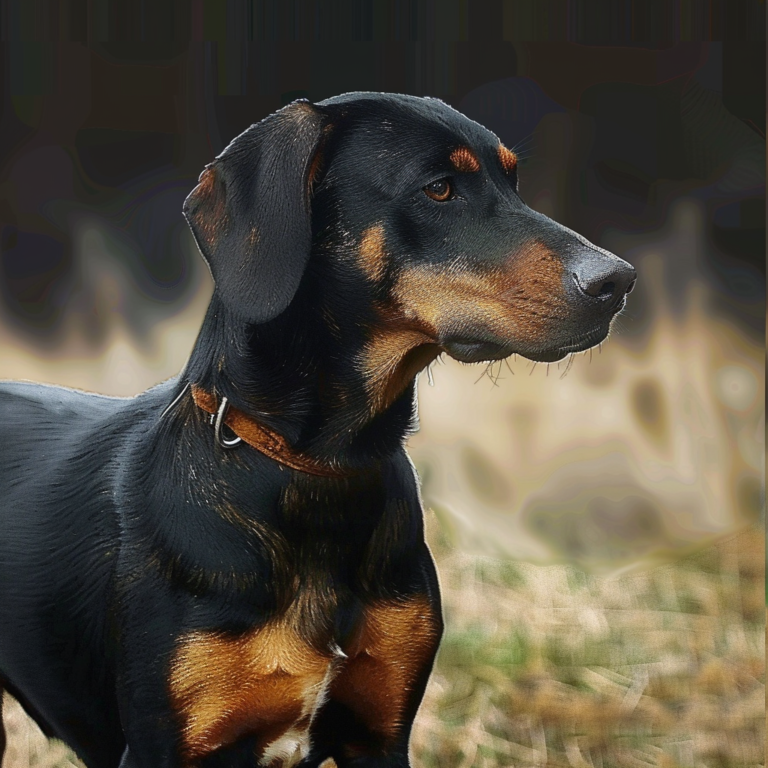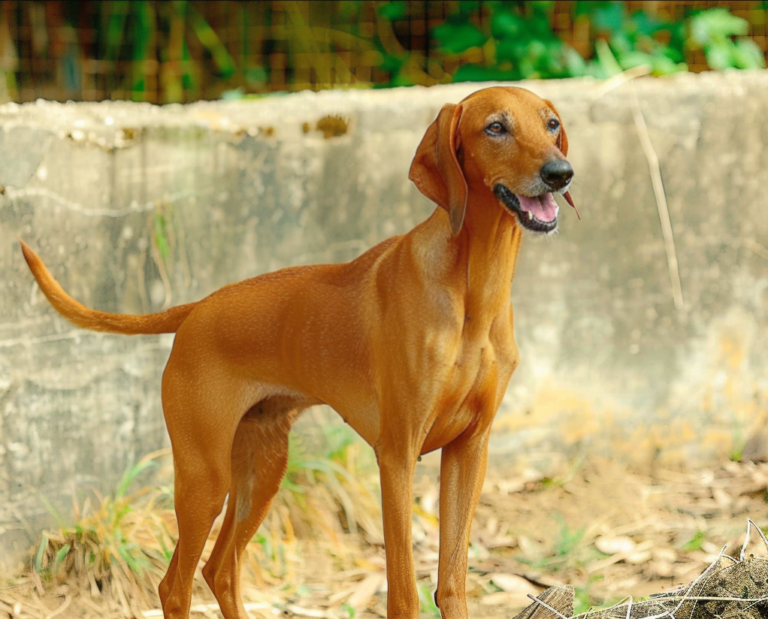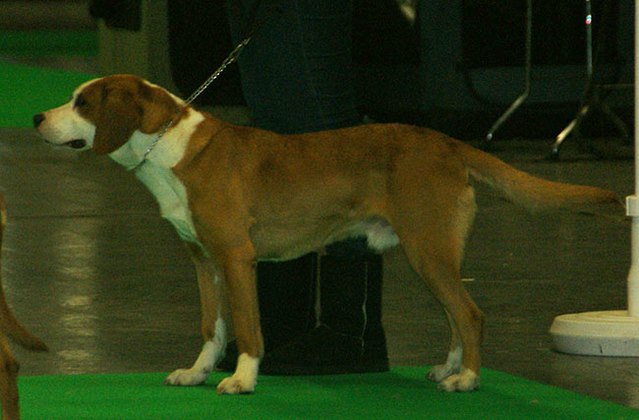The Spanish Hound (AKA the Sabueso Espanol) is very capable of hunting both large and small game and can also be used for blood tracking as well. This is an old breed – the first written record comes from a book published in the 1300’s! Used successfully for years on bear and wild boar, eventually firearms became more commonly used on those giant beasts which quickly reduced the populations of these game. In response, hunters with Spanish Hounds became more focused on smaller game such as fox and hare. Although very old, these hounds weren’t formally recognized until the 1900’s, at which point a standard was written. Interestingly there was once both a large and a small version of this breed although at this time, only the larger size still exists. Today, the breed is recognized by the UKC in the United States but is fairly rare.
The Spanish Hound thrives when given lots of acreage to run and hunt in. He would be miserable living in an apartment. A high energy scenthound, he is not for the average pet owner and can be destructive when his exercise needs are not met! This high-stamina hound was bred strictly for hunting rather than companionship and therefore requires the right home and owner in order to be happy – namely a home in a rural area, with active owners. His sniff-first, think later attitude means he’s safer when kept in a fenced area or on-leash while in any area with cars nearby! He is capable of being calm in the home, however will likely do so only after he’s had a fulfilling day of both physical and mental work. Mentally rewarding activities include hunting and/or scentwork – sports which will keep this breed healthy and happy!
When it comes to training (and his temperament in general), the Spanish Hound can be very willful. He knows what his main job is (hunting) and he puts every effort into that endeavor while “lesser concerns” such as obedience training may not interest him as much. This said, he is intelligent and can learn quickly with a skilled trainer and the right motivation. Convincing this independent hound that he is not in charge will take effort and knowledge – after all, he was bred to take on wild boar and not back down! An owner/trainer will need to be very consistent with commands, while remaining steadfast and firm. He does best with short sessions rather than lessons that drag on all day. He usually prefers scent-related training to “boring old obedience”, and can be even be used successfully in drug and bomb detection, as well as in search-and-rescue efforts.
Spanish Hounds, like other scenthounds, have distinctive and loud voices which they can be prone to using frequently. The “song” of the Spanish Hound was useful in the hunt, as it would change once the dog found its prey. A hunter would be able to tell, at a distance, what was going on despite not being able to always see the hound! The “song” is less of a bark, and more of a howl or a bay. Nowadays, leaving one home alone all day is likely to increase that amount of baying! The upside to this is that they can be great watchdogs, sounding a very loud and noticeable alarm if someone steps onto the property. They also tend to be naturally territorial and do not like strangers entering their home or yard.
The Spanish Hound, unsurprisingly, has a very high prey drive and doesn’t always mix with small animals. In addition, unlike hounds used to hunt in packs, he was often a solo hunter who doesn’t think much about other dogs. It’s not so much that he is aggressive (in fact, this trait is rarely seen), rather he is a self-sufficient and independent fellow who doesn’t tend to rank play as a high priority. Most will much prefer to spend their time with an owner instead, and this is where their social side will shine through! With those that he loves, he is affectionate, gentle and devoted. He can even do well in a family with children, although does not tolerate rough treatment and as such does better with slightly older kids.
Spanish Hounds are medium sized dogs with a rectangular shape. The body should be noticeably longer than tall and built very solidly, similarly to his Bloodhound ancestor. The ears are another distinctive feature, being extremely long and hanging down in a corkscrew shape. They do need to be cleaned and inspected regularly to keep from getting infections from trapped dirt. The tail is thick at the root and carried in a curve between the hocks while at rest. The hair at the end of the tail should form a short “paint brush”. The coat is short, dense and flat – always orange and white in color (either light lemon or a darker russet brown). The color is splashed in irregular patterns across the body. This coat is low maintenance and sheds moderately.




